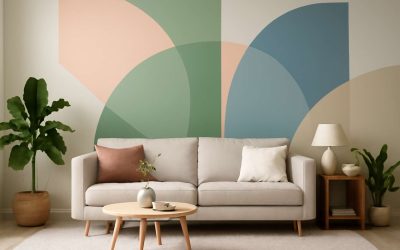Changing the color of your walls can instantly brighten up your space, change the mood and create a fresh, new look. But before reaching for the standard matt paint, why not experiment with different wall painting techniques to find a look you love? From textured and faux finishes to ombre and stenciling, there are plenty of ways to add style to your walls without breaking the bank.
Before you start painting, make sure your surface is clean. Wipe down the walls with a damp cloth to remove any dust, dirt or grime, and allow the surface to dry completely before you begin. A freshly-washed wall will allow the paint to adhere properly and provide a better finish. It will also help you achieve more vivid colors and a smoother texture than if you were to paint over a dirty or soiled surface.
To prepare for the actual wall painting, you will need a few tools and supplies. Besides the paint of your choice, you will need a paint brush and rollers. Depending on the type of paint you’re using, you might also need primer or other additives such as fillers or leveling agents. A tarp or dropcloth to protect your floor is also a good idea.
If you’re planning to do a lot of detail work or cut-in, it’s best to use a smaller brush rather than a roller. A 2- to 2-1/2-inch angled brush will be easier to maneuver and get into tight corners. Rolling is usually done in 3- to 4-foot sections, so you can be sure of even coverage and avoid ridges. Start in a corner and work your way down the wall, making sure you’re covering all of the wall before moving on to another section. If you’re going to do a rolling pattern, be sure to use a light touch; lifting the roller can cause the paint to bubble or run.
For a more modern and sophisticated look, try a textured wall painting technique like stippling or rag rolling. Both require a base coat of your chosen color and then a glaze mixture that is either slightly or significantly darker. The contrasting color will highlight the textured effect and add a subtle wash to your wall. Sponging is a similar technique that uses a sponge to apply a softer, more subtle look with a blending of the two colors.
Another option is to faux finish your walls with a faux gilding process. This technique uses a gold or silver paint to add shimmer and shine. The faux gilding can be used on a single wall or applied to all the surfaces of the room, and it is easy to accomplish with a little practice. Once you’ve mastered the basics, you can apply the technique to other types of materials as well, such as wood paneling or wallpaper.



0 Comments